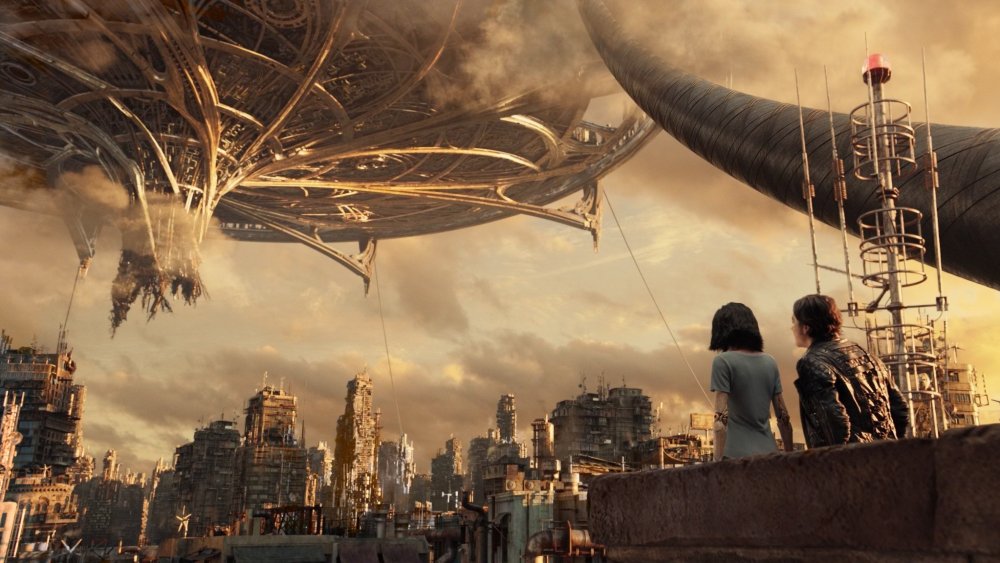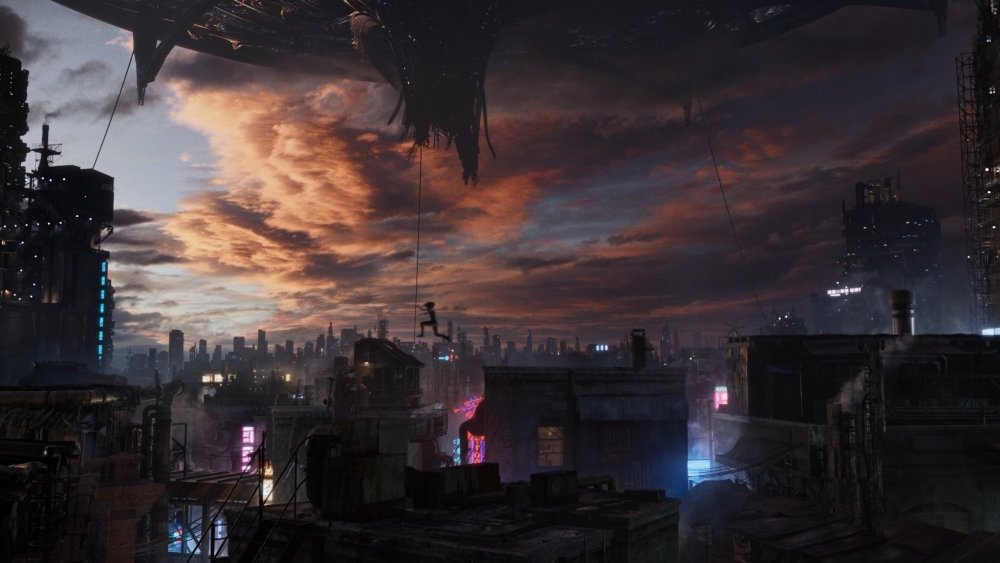The Real Reason Why Alita: Battle Angel Takes Place In Latin America
We're not in Kansas anymore, Alita.
When 20th Century Studios' Alita: Battle Angel first hit theaters (and if it returns to the big screen once again), fans of Yukito Kishiro's '90s manga and anime Battle Angel Alita likely noticed one glaring difference: the story's setting. Unlike the cyberpunk universe it was based on, director Robert Rodriguez and producer-slash-co-writer James Cameron's Alita: Battle Angel uprooted where the popular Japanese property was based and dropped it into a completely different corner of the globe.
Set in a future-version of Central America, the long-gestating film's production design for the scrap heap known as Iron City and its floating counterpart Zalem was inspired by various and very real Latin American cities. It was a creative decision partly influenced by Cameron's obsession with getting the science of science-fiction right.
Speaking to Syfy Wire, co-production designer Steve Joyner revealed that in addition to "about 200 drawings of vignettes based on the source material" and upwards of 40 pages of single-spaced notes, the creative team took notes from Arthur C. Clarke's 1979 novel Fountains of Paradise to help them decide where the futuristic city should be located.
"One of the things that stood out right away was that the city of Zalem was the remains of a space elevator," Joyner said. "And referencing Fountains of Paradise by Arthur C. Clarke, such a thing would need to be on the equator to work properly. And so immediately we thought, oh, this is a great crossover. We need layers of the old world with a new world built on top."
That dedication to the science of Alita's future dystopia was born from Cameron's desire — even from the film's early development stage — to make the world of the popular warrior cyborg realistic. "What we've tried to do in our films, in general, is create our own science fact," Alita: Battle Angel producer Jon Landau said. "It doesn't have to be fact in our world, but it has to be fact in the way we present it and how we set it up and how we establish it."
Robert Rodriguez's experience filming in Mexico played a huge part in the aesthetic of Iron City
While Cameron's desire to create yet another enviable sci-fi epic universe was key to the shift in setting and world building in Alita: Battle Angel, so was Rodriguez's appreciation for Mexico.
In the manga, Iron City is set in a Japanese cyberpunk version of Kansas, but by the time Cameron had backed out of directing Alita and Rodriguez had become attached, Latin America was looking more appealing. The Troublemaker Studio co-founder and co-owner already had experience with filming multiple movies in Mexico, so with a team well acquainted with the country and the surrounding area, it was seemingly the perfect choice among a list of filming locations near the equator (via Syfy Wire).
With Mexico now as the anchor of the film, Rodriguez, Joyner, and co-production designer Caylah Eddleblute began laying out their version of Iron City. The three drew from their time in places like Mexico City and World Heritage site San Miguel, which dates to back to colonial times. Eddleblute told Syfy Wire that locations like "Jaral de Barrio, which has at its center a sprawling aging hacienda" also had a major influence on Iron City's look. "I related Iron City's core to the alleys and tunnels of Guanajuato," she told the site.
Another major reference point? Cuba's timeless 1950s aesthetic, which also served as a point of reference alongside Robert Polidori's celebrated Havana photo essays. The grand — and decaying — architecture of Havana reportedly gave one of the film's key locations its distinctive look.
While Rodriguez's expertise fueled a significant portion of Iron City's look, Eddleblute said that Cameron never forgot the manga's origins, with the writer and producer insistent that asian cities like Kowloon, Hong Kong — and its notable vertical city slums — serve as inspiration for certain parts of Iron City.

